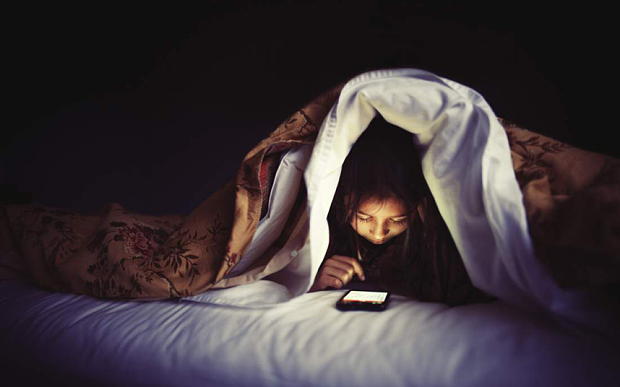
“Lights out” is a very common phrase meant simply to imply that it’s time to go to sleep. In days past, our ancestors lived their lives according to what was a naturally determined version of “lights out” – typically rising with the sun and turning in when it set. Over the last century, however, we have been given far more control – now able to not only artificially and technologically manipulate our light exposure, but prolong it to such an extent that some of us live our lives in a state of nearly 24/7 light exposure. Given this fact, along with all we now know about what it takes to get a good night’s sleep, it occurs to me that it’s high time for “lights out” to be seen in a new light.
The fact of the matter is a whole lot is known about light’s impact on our likelihood of getting a good night’s sleep. The potential problems and pitfalls of living in a world of electronic devices and ubiquitous screens give new meaning to the description, “light sleeper.”
According to the National Sleep Foundation, 90 percent of people in the US admit to using an array of technological devices – from TVs and tablets to smartphones and laptops – during the hour before they go to sleep. The problem with this tech-heavy approach, simply put, is that darkness matters. Insufficient darkness not only delays the onset of sleep, but also leads to more frequent and prolonged wakenings. Light exposure is one of the most powerful signals in our environment when it comes to setting the body’s internal clock – a biological “clock” responsible for determining our sleep-wake cycles (also referred to as circadian rhythms). Keeping in mind this simple concept, the reasons for the following common sleep-enhancing tips should become both more obvious and enlightening.
- Rise and shine. Like “lights out,” rise and shine is an expression – as well as a piece of advice – that comes with plenty of supporting evidence. Exposure to sunlight (or bright, blue light) in the morning and during daytime hours is known to reinforce your body’s natural sleep-wake cycle and signal that it’s time to be awake.
- Face (smart)phone facts. The screens on smartphone typically give off bright blue light – a design feature meant to help make them easier to see even in bright sunshine, but one that unfortunately comes with potential sleep consequences. Designed to mimic sunlight, this blue light is considered worst with respect to throwing off your body’s sense of day and night. The solution? Reduce your exposure to bright and blue-rich light in the evenings (generally recommended 1 to 2 hours before bedtime). If you find yourself unable to set aside your phone altogether, the iPhone added a new feature (in iOS 9.3) called Night Shift that allows you to shift to “warmer” and less eye-opening hues by cutting down your exposure to the harsher blue light at bedtime.
- Electronic-free bedrooms. Smartphones aren’t the only offenders when it comes to devices that interfere with getting a good night’s sleep. Common sleep-enhancing recommendations also routinely include turning off and/or keeping all close-range electronic devices (ie those which emit blue light) out of the bedroom. While phones, tablets and other screens definitely fall into this category, don’t forget to consider (and remove) chargers, sound machines, and other blue-light electronics and accessories as well.
- Choosing the right nightlight. Nightlights have increasingly become the subject of scrutiny in light of what we now know about sleep/wake cycle disruptors. This seems to be especially true for parents wondering whether or not to install nightlights in their bedrooms. Clearly, blue-emitting nightlights are not a good idea. But apparently, white light isn’t so great either. For those committed to using a nightlight, it seems that red light might be your best choice. From a practical parenting standpoint, however, I will point out that newborns enter into the world already well-accustomed to sleeping in the dark. As much as possible, it would seem best to keep it this way, rather than introducing them to artificial light at night.
The bottom line is that sleep is something we all do, and that we all need. It is also one of those key aspects of our everyday lives that all too often gets too little attention…that is, until we find ourselves fatigued. Representing much more than a casual expression, “lights out” now represents a succinct yet valuable piece of advice that, firmly supported by the latest in sleep science. It is my hope that by shedding some light on this important issue, you will see the value of turning out the lights, shutting off the screens, pulling the shutters and, at least in this particular instance, choosing to remain in the dark.